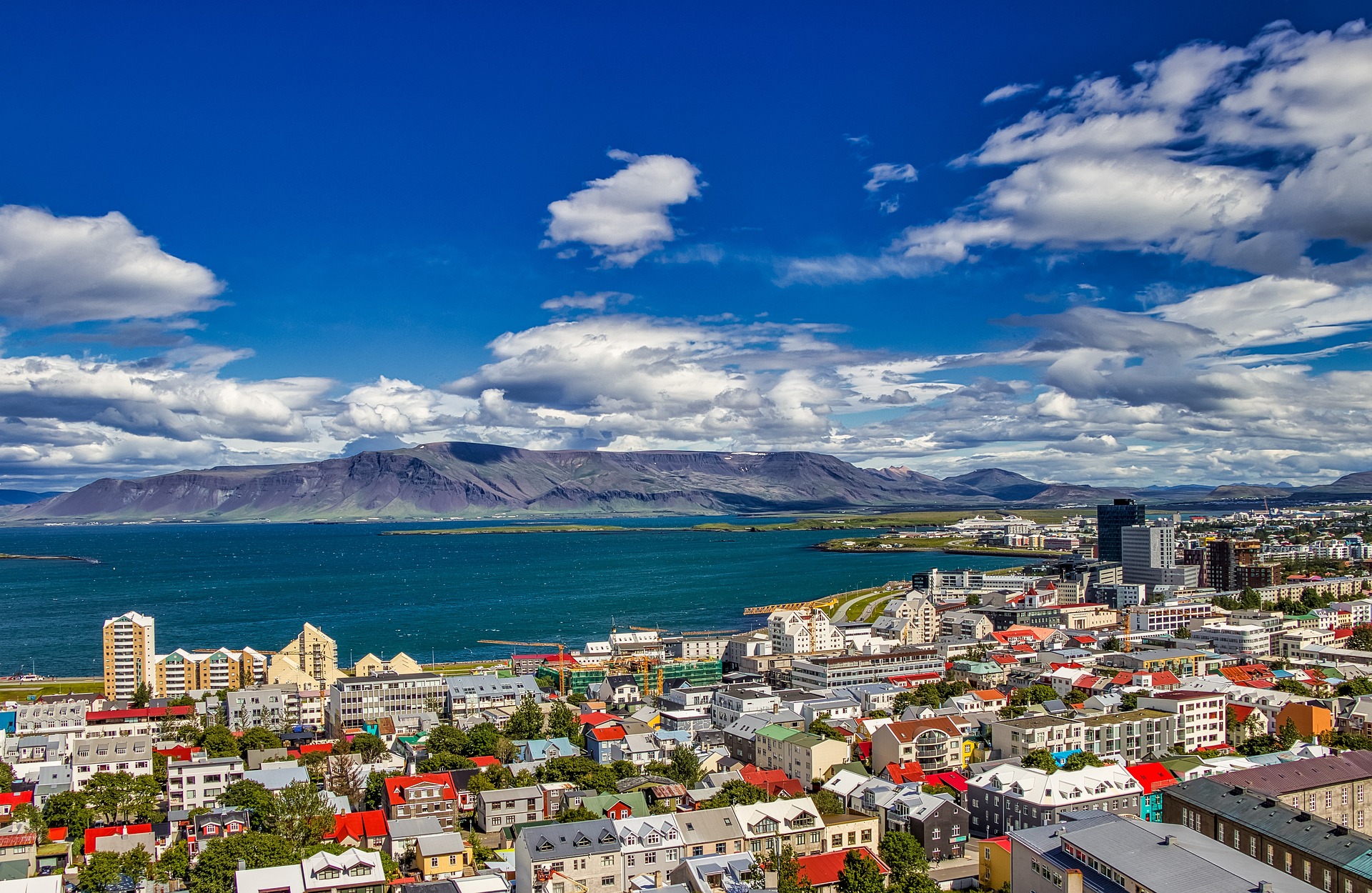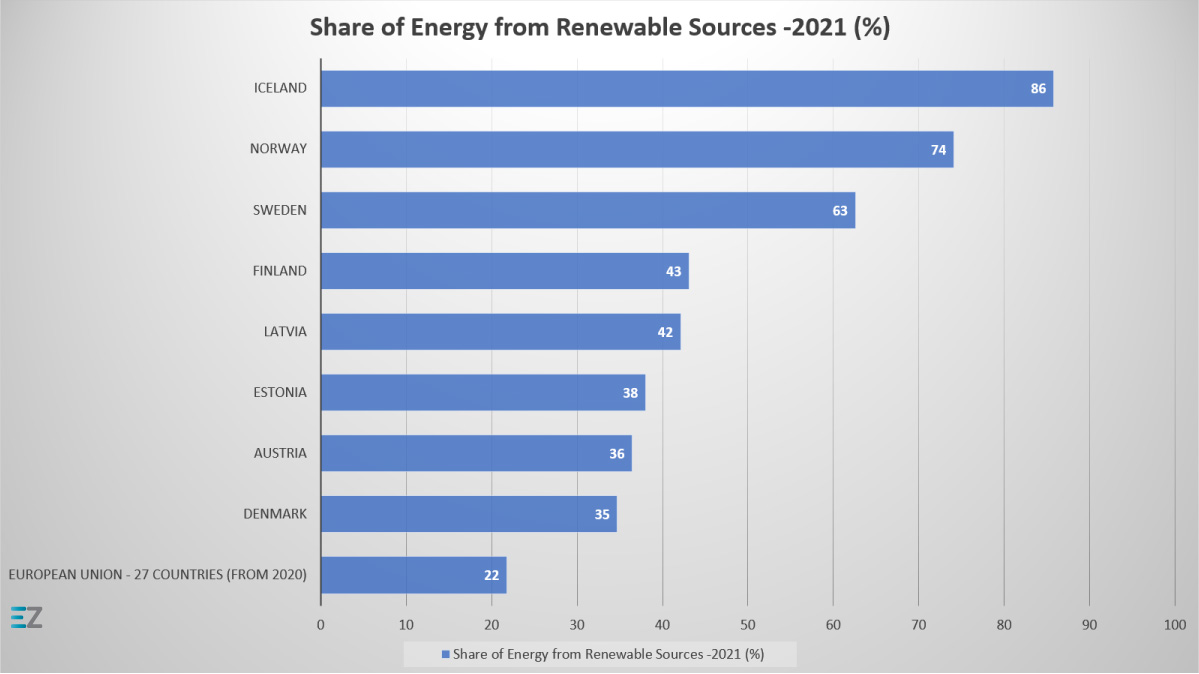New data from Eurostat shows that renewables accounted for over a fifth (21.8%) of the energy consumed in the European Union in 2021. While this represents a slight decrease of 0.3% compared to 2020, experts attribute this to a surge in energy use after the lifting of pandemic lockdowns. Nevertheless, the report underscores that Europe remains on track to decarbonize its energy infrastructure. In fact, the International Energy Agency recently revealed that the world is expected to add as much renewable power in the next five years as it did over the previous two decades, signaling a promising shift toward cleaner energy sources.
According to Fatih Birol, the executive director of the International Energy Agency,
Renewables were already expanding quickly, but the global energy crisis has kicked them into an extraordinary new phase of even faster growth as countries seek to capitalise on their energy security benefits
As a result, Eurostat’s 2022 figures are likely to paint a more optimistic picture. In the meantime, let’s take a closer look at the EU’s current energy consumption trends.
Which EU countries are using the most renewables?
Sweden has once again emerged as the EU country with the highest proportion of renewable energy in 2021, according to new data. The Nordic nation obtained almost two-thirds (63%) of its energy from renewable sources, including biomass, hydropower, wind, heat pumps, and liquid biofuels. While this is an impressive figure, some environmentalists have expressed concerns that bioenergy, which involves burning waste from forests, may not be truly sustainable.
Finland, another forest-rich country, came in second with a 43% share of renewable energy, primarily from hydropower and bioenergy. Latvia secured the third position with a 42% share, with biomass and hydropower as its primary renewable sources.
Estonia, Austria, and Denmark also made the list, with 38%, 36%, and 35% of their energy coming from renewables, respectively. These countries rely heavily on hydropower and wind energy in their energy mixes, showcasing the potential of renewable sources to power entire nations.
 Iceland stands out as the European country with the highest proportion of energy generated from renewable sources.
Iceland stands out as the European country with the highest proportion of energy generated from renewable sources.
However, when it comes to renewable energy usage in Europe more broadly, two non-EU countries are leading the charge. Iceland stands out with the highest proportion of renewable energy in Europe, thanks to its abundant geothermal resources. According to Eurostat’s figures, a staggering 86% of Iceland’s energy comes from renewable sources, primarily geothermal power. Meanwhile, Norway ranks second with an impressive 76% of its energy generated from renewables, primarily hydropower. These two countries demonstrate the remarkable potential of renewable energy sources to meet a significant portion of a nation’s energy needs.

EU Countries Lagging Behind in the Race for Renewable Energy?
While the EU as a whole saw a 21.8% share of renewable energy sources in 2021, 15 out of the 27 member countries reported lower figures. These countries are Belgium, Bulgaria, Czechia, Germany, Ireland, Spain, France, Italy, Cyprus, Luxembourg, Hungary, Malta, the Netherlands, Poland, and Slovakia. Among these countries, Luxembourg had the lowest proportion of renewables at just 11.7%, followed closely by Malta at 12.2%. The Netherlands, Ireland, and Belgium also recorded low figures, with renewable energy shares of 12.3%, 12.5%, and 13%, respectively.
Despite progress made in the use of renewables, the EU still has a long way to go to achieve its target of 40% renewable energy by 2030, and there are ongoing discussions about upping it to 45% under the new REPowerEU plan. This would require increasing the share of electricity generated from renewables to 69%, according to energy think tank Ember. However, EU countries are currently aiming for 63% renewable electricity by 2030, with challenges such as difficulties in obtaining construction permits, posing a significant risk to achieving this target. To accelerate the transition to renewables, experts suggest improving state auctions for clean energy projects and offering incentives for rooftop solar installations.
The EU as a whole still has a significant gap to close to achieve its renewable energy targets. However, with the continued rise of renewable energy and the promise of new technologies, there is hope that a cleaner and more sustainable energy future is within reach.q